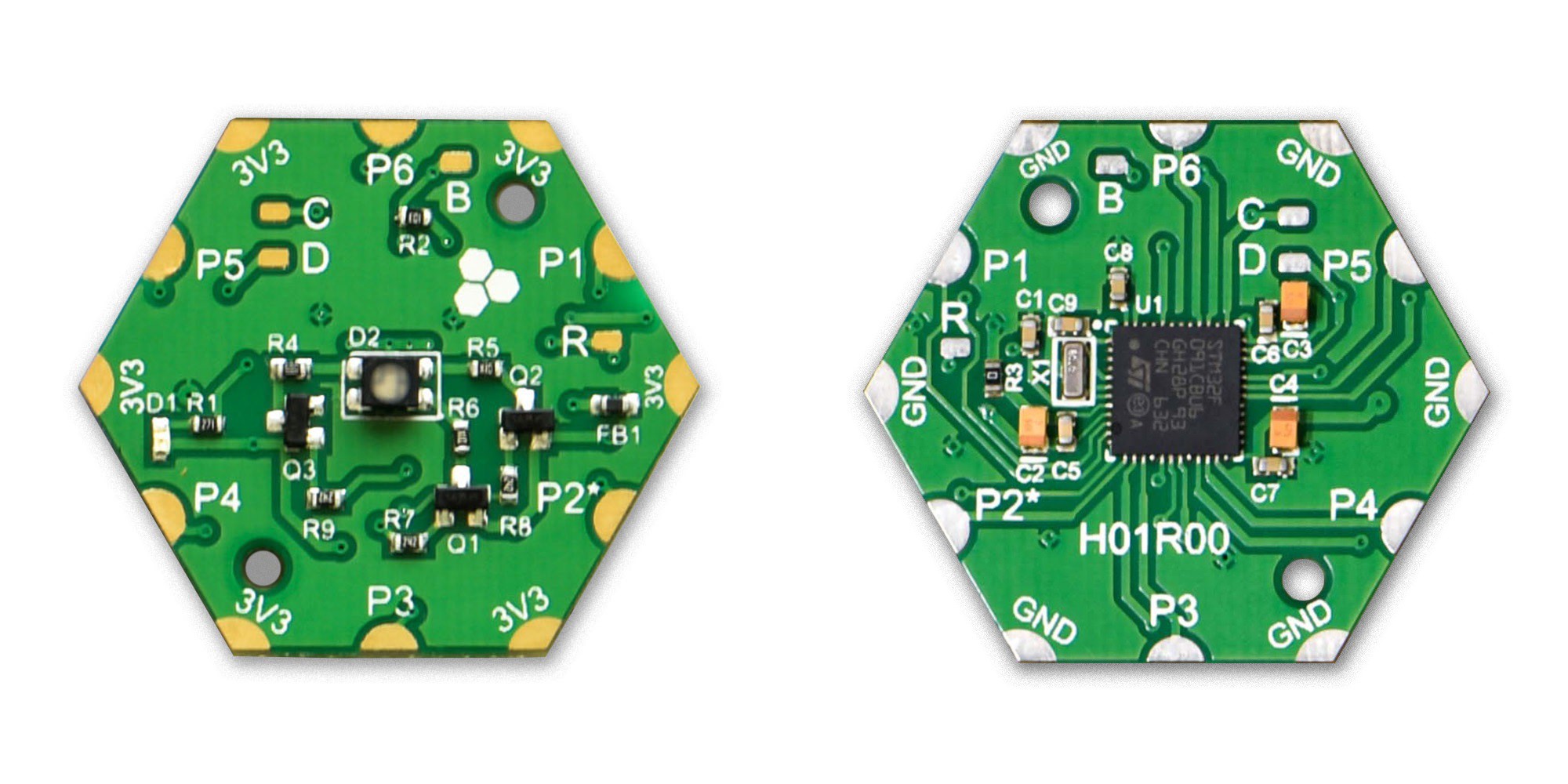
H01R00 is a smart RGB LED module based on Cree CLVBA-FKA-CC1F1L1BB7R3R3 RGB LED and STM32F0 MCU. It is part of the upcoming Hexabitz modular prototyping system.
- Use as a stand-alone smart RGB LED and easily control via a Command Line Interface (CLI).
- Firmware has embedded on / off / toggle, PWM, dimming and color sweep functionality.
- Program advanced C code with our easy-to-use APIs.
- Connect many H01R00 modules together and build interesting flat and curved boards with any configuration you imagine!
- Send commands to a single LED, a group of LEDs or broadcast to all of them at the same time.
- Connect to external hardware or combine with other Hexabitz modules!
Technical Specifications
- Six array ports and six power ports (+3.3V and GND).
- Access to 6xUART, 2xI2C, SWD, BOOT0, RESET.
- Cree CLVBA-FKA-CC1F1L1BB7R3R3 RGB LED:
- Dominant Wavelength: Red (619 - 624nm) Green (520 - 540nm) Blue (460 - 480nm).
- Luminous Intensity (mcd) @IF=20mA: Red (224 - 560) Green (280 - 900) Blue (90 - 355).
- STM32F091CBU6 32-bit ARM Cortex-M0 MCU.
- 8MHz external oscillator.
Physical Properties
- Shape: Hexagon
- Size: 3 cm short diagonal
- Area: 7.8 cm^2
- Soldermask Color: Dark green
- Finish: ENIG (gold) or HASL-LF (tin)
Documentation
Design Files
- Module schematics [PDF]
Source Code
- H01R00 module code [repository]
FAQ
Q: Isn't a 32-bit MCU an overkill for a smart LED module?
A: Yes! But all Hexabitz modules -whether it's a complex Ethernet or IMU or a simple LED- share same backend hardware and software. This what gives the platform its unmatched modularity and scalability. Cortex-M0 MCUs are small, cheap, power-efficient, yet capable of really wonderful things. Having an embedded MCU provides a cheaper and more compact alternative to connecting an LED breakout with an external controller.
Q: What level of soldering experience is required?
A: Hexabitz are designed for the absolute soldering beginners! The edge pads are large and easy to reach and anyone with basic knowledge of soldering can assemble a flat array. Curved and spherical arrays require more training but can be made easier with 3d-printed fixtures.
 Hexabitz
Hexabitz
Discussions
Become a Hackaday.io Member
Create an account to leave a comment. Already have an account? Log In.